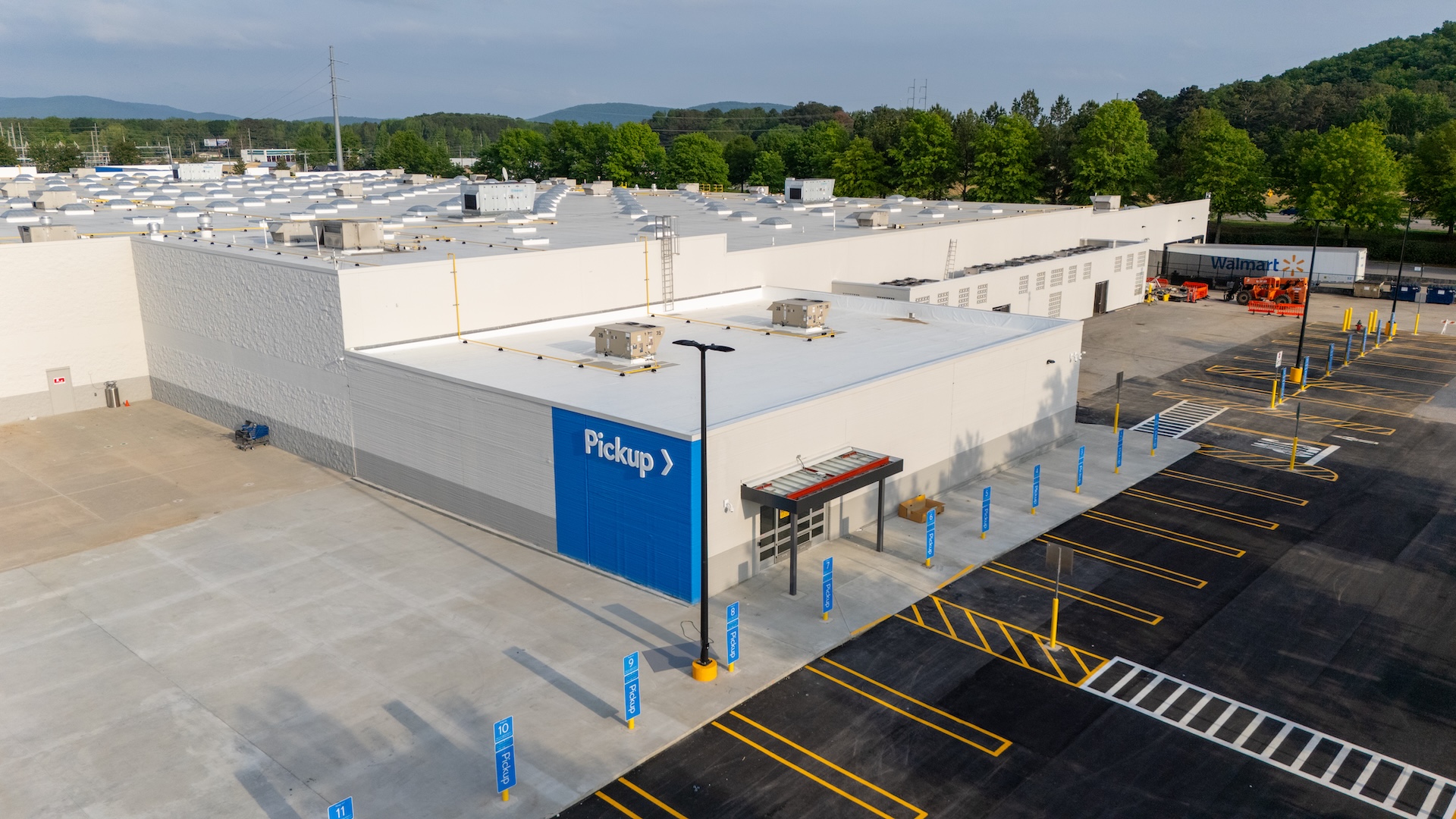Walmart, the world’s largest retailer, and Alquist 3D, a trailblazer in construction technology, have completed a groundbreaking project that could reshape how commercial buildings are built.
The recent 5,000-square-foot expansion of Walmart’s Supercenter in Owens Cross Roads, Alabama, was completed in record time using 3D concrete printing (3DCP) technology. This proves that automation and robotics are no longer futuristic concepts but viable, scalable solutions for today’s construction challenges.
Concrete Proof That 3D Printing Works in Commercial Construction
Using robotic arms to layer high-performance concrete, Alquist 3D built the 16-foot-high structural walls in just 75 hours over seven operational days. Compared to conventional methods, the process was 50% faster, three times stronger, and 15% more cost-effective, all while reducing material waste by 55%.
This marks Alquist’s second collaboration with Walmart, following a successful 3D-printed build in Athens, Tennessee. According to Patrick Callahan, CEO of Alquist 3D, this project underscores that 3D printing is no longer a novelty—it’s a commercially viable method that offers time, cost, and environmental benefits.
“We’re proving that 3DCP is cheaper and greener than standard CMU construction” said Darin Ross, president and CEO of FMGI, the general contractor overseeing the project.
Why This Project Matters
Construction is notorious for being slow, expensive, and wasteful. Walmart and Alquist’s latest project directly challenges those limitations:
- Speed: From weeks to days—walls that would typically take up to three weeks to complete were done in just over three days.
- Cost-efficiency: A 15% cost reduction compared to the previous 3DCP build, with expectations of further savings at scale.
- Sustainability: The environmental footprint is significantly lower, with less than 5% material waste and reduced labor requirements.
- Labor optimization: A five-person crew using two 3DCP systems completed work typically requiring larger teams.
- Weather resilience: Unlike traditional methods that halt in bad weather, Alquist’s process continued uninterrupted.
LB Johnson, Vice President of Construction at Walmart, emphasized the broader significance:
“Our approach to innovation is designed to optimize processes and simplify field operations – leading to reductions in project costs and timelines. This will enable speed to market for our customers and help accelerate evolution in the construction industry.”
Building the Future Workforce
Alquist 3D isn’t just printing buildings; it’s also investing in the future of the workforce. Through a curriculum developed with Aims Community College in Colorado, it’s training the next generation of construction professionals to manage and execute 3D-printed projects. The program blends hands-on technical training with innovation-driven thinking, helping bridge the skilled labor gap with a tech-forward approach.
A Glimpse into the Future of Construction
With this second successful Walmart expansion, Alquist 3D has proven that robotic construction isn’t a one-off experiment; it’s a scalable, repeatable model for commercial buildings. The Alabama project sets a new benchmark for retail construction, where speed, sustainability, and savings converge.
Walmart’s continued experimentation with innovative building methods could signal a broader shift in the design and delivery of retail spaces, as well as potentially other commercial and residential buildings.
As cost pressures and labor shortages continue to challenge the industry, projects like this demonstrate that the answer may lie not in more traditional methods, but in rethinking how we build from the ground up.
Source: BUSINESS WIRE, May 8, 2025
View the original article and our Inspiration here


Leave a Reply